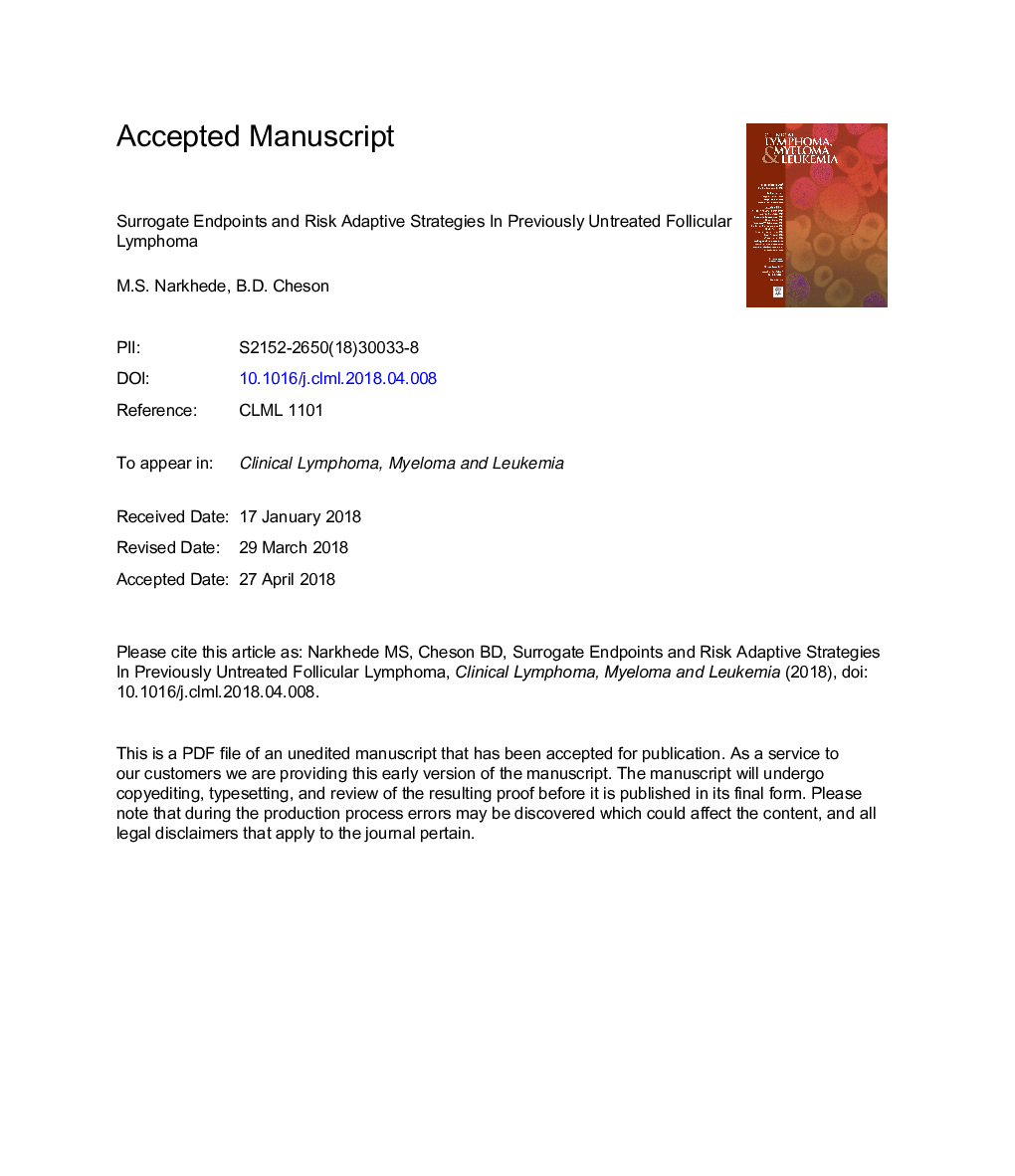| Article ID | Journal | Published Year | Pages | File Type |
|---|---|---|---|---|
| 8615294 | Clinical Lymphoma Myeloma and Leukemia | 2018 | 16 Pages |
Abstract
Follicular lymphoma is the second most common subtype of non-Hodgkin lymphoma with an estimated 3.18 cases per 100,000 people. Despite the prolongation of survival with chemoimmunotherapy, variability in response to initial treatment and outcome still exists. Whereas prolonging overall survival is important, it is generally an unreasonable primary endpoint in the front-line setting. The long follow-up needed and the influence of subsequent therapies creates a potential bias. Thus, clinical trials require approximately 5 to 8 years from activation to completion and analysis of outcomes. This duration results in enormous cost and a delay in developing newer therapies. Thus, there is a need to identify markers or surrogate endpoints that can be used in clinical trials to expedite the development of new treatments. This review will discuss various clinical, radiologic, and laboratory measures used to assess outcomes and overall survival in patients with untreated follicular lymphoma, and gauge their utility in clinical trials as surrogate endpoints.
Related Topics
Health Sciences
Medicine and Dentistry
Anesthesiology and Pain Medicine
Authors
Mayur S. Narkhede, Bruce D. Cheson,
